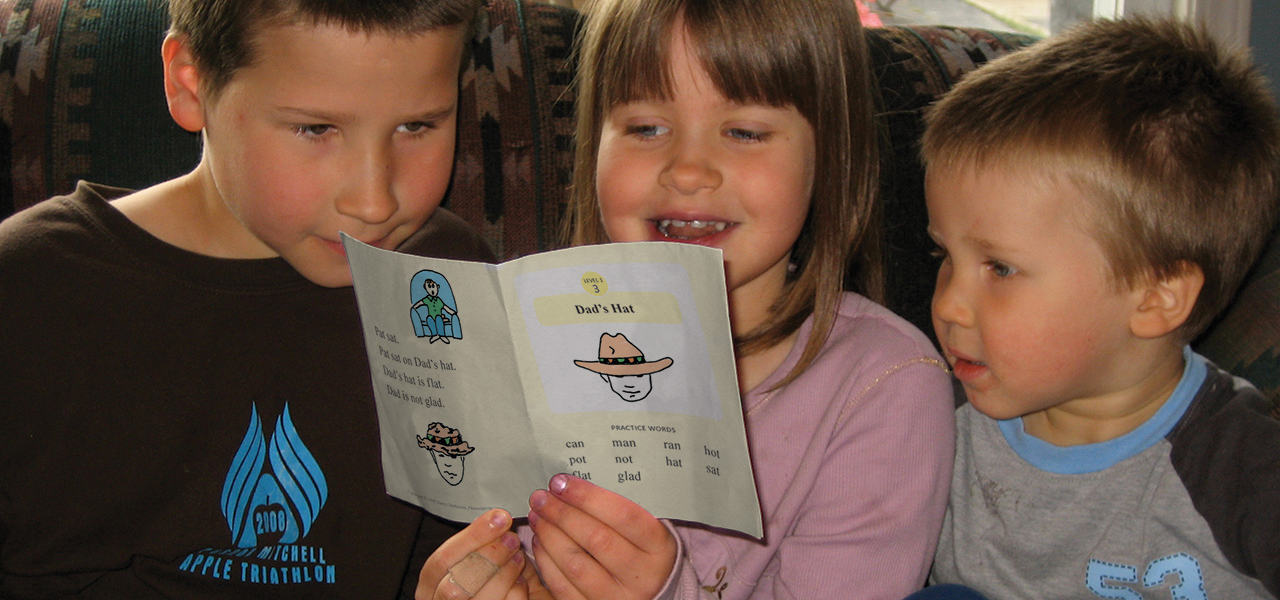Are You Switching to CHC’s Reading Program?

Are you considering switching from a different reading program to Little Stories for Little Folks, CHC’s popular phonics and reading program? We’ve supported countless families on this journey—it’s easy to make the transition without missing a beat.
First off, be aware that Little Stories for Little Folks is a two-year reading program. Students complete Level 1 in kindergarten and then complete Levels 2-4 in first grade. When students complete the program at the end of first grade, they will be reading at a second- to third-grade level.
If your child has begun learning to read in kindergarten using a different reading program, it can be tempting to jump right into CHC’s first grade schedule. This means your child would start reading Level 2 stories in Little Stories for Little Folks without having completed Level 1 stories.
Reading is such an important life skill, however, that it is much better to begin with a quick review to ensure that no phonics concepts are missed in the transition from one program to the other. Then you can progress with the confidence that your child will not have gaps in his reading skills. This review will likely take only a few days.
Ready to get started? Read on for a step-by-step guide to reviewing the phonics lessons in Little Stories for Little Folks.
Step 1: Review word attack skills
First, and most importantly: Was your child taught good word-attack skills? That is, does he sight read, or does he know how to sound out words that he has not previously encountered? If he consistently sounds words out, then move on to Step #2.
If he doesn’t sound out new words, please begin by reading and following the directions on page 12-13 of Little Stories.
Step 2: Start reading the booklets
Review the first story, “At Mass” (Level 1, Booklet #1) from Little Stories for Little Folks on page 32, then follow the directions associated with that booklet on pages 14-17 and 31. If your child has good word-attack skills, this will probably take him no more than ten minutes.
Once complete, move on to Booklet #2, again following the directions on page 37. Then complete Booklet #3.
Step 3: Work through the booklets
If your child is zipping through these lessons without a hitch, he may from this point simply read aloud the Level 1 booklets to you and do the associated worksheets. If at any point he stumbles, stop! Pinpoint the “stumble” and make sure he understands the point that made him stumble before moving forward.
If your child continues to work through the stories and worksheets quickly and easily, he may read three or four stories each day until he begins to go more slowly or stumbles more often. That is your signal to slow down and start using the program at the more normal pace, completing all the activities listed on the direction pages, including the Name Game and the Silly Willy Sentences Game. CHC Lesson Plans for First Grade recommend spending a week mastering each booklet, but there is no need to follow this schedule strictly; different children may require more or less time to master each booklet.
Final thoughts
Reviewing the first part of Little Stories for Little Folks not only benefits your child’s reading skills; it is also beneficial for his spelling skills. Spelling is based upon phonics, so putting in the extra effort now to make sure your child has a strong phonics foundation will bear rich rewards in the future.
The photo at the top of this article was submitted by Brigitte from Canada.
About Nancy Nicholson
Nancy Nicholson is one of the founding authors of Catholic Heritage Curricula. Equipped with an abundance of God-given talent, a major in Secondary Education–English, and years of experience homeschooling her own children, she has written over thirty educational titles, beginning with Little Stories for Little Folks. Her unique ability to develop programs and workbooks that “fit” both advanced and struggling students is due to her experience raising children of different ability levels and learning styles: two of her children are developmentally challenged, while another went on to graduate from Cornell and is now a college professor.
Related Blogs
If you enjoyed this article, you might be interested in the related articles below.
Favorites
Explore CHC’s top favorites! From art to literature, science to hands-on religion, CHC has materials to enrich every Catholic homeschool.


















